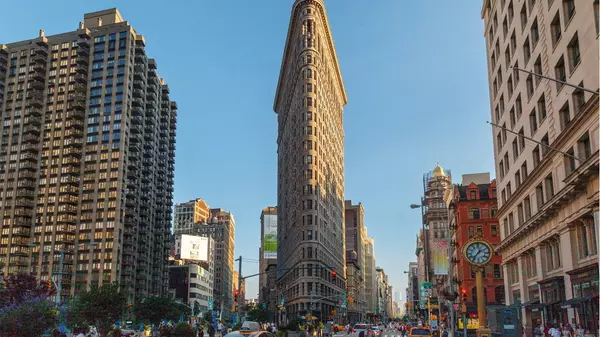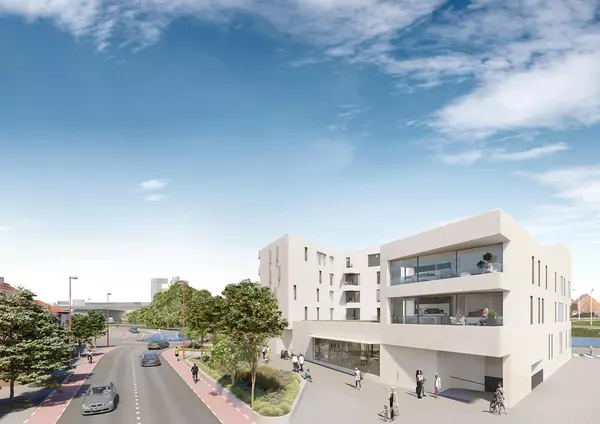Best Small Cities To Live in America—but Don’t Expect Bargain Prices
Bigger isn't always better. Most Americans say they'd prefer to live in the suburbs compared to big cities or rural areas.
"Small-city life can be best for those who appreciate more wiggle room, fewer degrees of separation, and shorter commutes, to name just a few of its advantages," says WalletHub in its latest report on the Best Small Cities in America.
Almost half (47%) of Americans say they prefer a small city to an urban core or a rural town, according to WalletHub. The reasons: Most of them combine more affordability, lower crime rates, and more space with convenience and amenities.
For example, the cost of living for a two-parent, two-child family in Hanford, CA, would be $8,013 per month, compared with $17,621 for the same family in San Francisco, says the report.
"Moving from a bustling metropolis to a small city could drastically cut down your cost of living," says WalletHub analyst Chip Lupo in the report. "On top of that, the best small cities offer strong job markets, high-quality education, good health care, safe living conditions, and plenty of local flair to help you achieve a high quality of life."
While median home prices in these desirable small cities often exceed the national median, they generally remain lower than in larger cities.
Of course, there are downsides to living smaller. Work commutes may be longer. Larger homes can require more maintenance and higher utility and insurance costs. Walkability can be limited. There may be fewer necessities like hospitals and public transport, as well as less diversity and culture.
Indiana takes 3 spots
Three of the top 10 cities in WalletHub's research are in one state: Indiana.
Synonymous with the Midwest, the state in the U.S. heartland is known for offering plenty of top-tier higher education institutions and sports teams, and has high marks in affordability and safety.
Indiana's median home list price of $299,900 is well below the national median of $429,000, according to Realtor.com® data.
Frequently topping the hottest ZIP codes lists, Carmel takes the top spot. Westfield is No. 5, and Fishers is No. 6. While none ranks particularly high in any one category, the overall score is higher than most small cities.
"We're seeing all kinds of people moving into Carmel, from neighboring states to coastal and Sun Belt markets wanting to take advantage of everything Carmel has to offer: vibrant lifestyle, affordability, safety, and good schools," local real estate agent Sandy Ginn, of the Sandy Ginn Team at Encore Sotheby's International Realty, tells Realtor.com.
But what makes Carmel special is that it is a "legacy" town, where locals may grow up and leave, but they often return, she says.
"They find their way back home, wanting what they had for the next generation," she says.
"Carmel, Fishers, and Westfield in Hamilton County are highly desirable suburbs because they blend excellent schools, low crime, and family-friendly neighborhoods with the convenience of nearby Indianapolis job opportunities," adds Realtor.com economist Jiayi Xu.
"While home prices are above the Indiana average, they are still relatively affordable compared to many of the nation’s top-ranked suburbs."
A 22.6% population bump from 2019 has fueled a construction boom—from housing developments and new schools to shopping districts and infrastructure—that is steadily transforming Hamilton County into a thriving regional economic hub, she notes.

How the small cities were selected
WalletHub's report takes a close look at more than 1,300 U.S. cities with populations between 25,000 and 100,000, and ranks them according to 45 key indicators of livability.
Those indicators are then compiled into five categories that equal a total score. These factors are affordability, economic health, education and health, quality of life, and safety.
Affordability includes metrics such as median household income, cost of living, and housing costs.
Economic health includes population growth, income growth, and job growth.
The education and health category includes the school system quality, the share of adults with a high school diploma, and the general health of the population.
Quality of life includes average commute time, the share of the population that can walk to work, and amenities like the number of coffee shops, fitness centers, and parks.
In general, the top 10 were not ranked very high in the quality of life category.
"While small cities might not match big metro areas on things like cultural variety or public transit, criteria which usually boost quality of life scores, they stand out in other areas like affordability, safety, shorter commutes, and community feel," explains Lupo to Realtor.com.
Safety includes the violent crime rate, the property crime rate, and pedestrian fatalities.
All 45 key metrics were weighted and then given a total score. Each small city is in the 99th percentile, meaning they are in the top 1% of small cities in the U.S.
1. Carmel, IN
Total score: 71.01
Median home list price: $327,250
While Carmel doesn't rank particularly high in quality of life (No. 268), it shines in affordability, safety, and economic health. It has one of the lowest unemployment rates in the country (3.3%) and one of the lowest costs of rent as a share of median household income, at around 14%.
It's also a healthy place, with low scores for residents in poor health (11th lowest), a very low violent crime rate (70th lowest), and the third-lowest pedestrian fatality rate in the country.

2. Brookfield, WI
Total score: 70.92
Median home list price: $574,900
Brookfield, too, has a relatively low quality of life rank (No. 292) but scores big in economic factors like a low unemployment rate (2.7%), with 3.5% of residents living in poverty.
It has one of the best median credit scores in the country (No. 782), and residents have a high quality of personal health, with 98% of the population having health insurance, the 12th-highest percentage in the nation.
3. Apex, NC
Total score: 70.67
Median home list price: $650,000
Apex is another small city with a relatively low ranking for quality of life (No. 554), but it makes up for it with low unemployment and crime rates, and a strong economy, with very few residents living below the poverty line.
Additionally, the median annual household income is a high $138,000, with most residents having a high school diploma or higher.
Apex shines in the economic health category, ranking No. 1 out of all 1,300 cities examined.
4. Lexington, MA
Total score: 70.41
Median home list price: $2,775,000
Easily the most expensive small city in the top 10, Lexington may not get points for affordability, but it makes up for it by ranking No. 1 in education and health.
It ranks No. 3 for the share of residents with health insurance, and it has high marks in weighted factors like school system quality, high school graduation rate, and having a low share of adults who are obese or physically inactive.
5. Westfield, IN
Total score: 69.84
Median home list price: $503,900
The second Indiana city on the list, Westfield had the highest affordability rank in the top 10 (No. 25) and ranked high (No. 29) in economic health.
6. Fishers, IN
Total score: 69.68
Median home list price: $468,475
Like the other two Indiana small cities, Fishers ranks high (No. 26) in affordability, in safety (No. 36), and in education and health (No. 33). With a half-hour drive to Indianapolis and less than two hours to Cincinnati, Fishers can offer a reasonable work commute.
7. Brentwood, TN
Total score: 69.56
Median home list price: $1,774,000
The category where Brentwood shines is in safety, with a ranking of No. 49. It also tied for the fifth-lowest percentage of the local population living in poverty.
8. Saratoga Springs, NY
Total score: 69.49
Median home list price: $872,255
Saratoga Springs, a 3.5-hour drive to New York City, sees its highest rank with the quality of life category, coming in at No. 40. This means the small city shines in key factors such as average commute time and cultural indicators such as the number of attractions, movie theaters, and museums.

9. Appleton, WI
Total score: 69.38
Median home list price: $399,900
Appleton's highest ranking category is in quality of life (No. 60), which accounts for metrics such as the number of entertainment venues (e.g., restaurants, bars, and clubs) per capita, as well as health venues such as gyms, parks, and bike rental facilities.
10. Lehi, UT
Total score: 69.36
Median home list price: $574,900
Lehi's strength lies in its very high rankings in two categories: economic health (No. 5), which looked at factors such as population and income growth, and debt per median earnings. It also ranked very high (No. 10) in safety, which took into account not only crime rates but also the number of vehicular and drug deaths.
Where the city stumbles is in quality of life, as it ranked only 890 out of the 1,300 cities.
Categories
Recent Posts










GET MORE INFORMATION

Stevan Stanisic
Real Estate Advisor | License ID: SL3518131
Real Estate Advisor License ID: SL3518131
